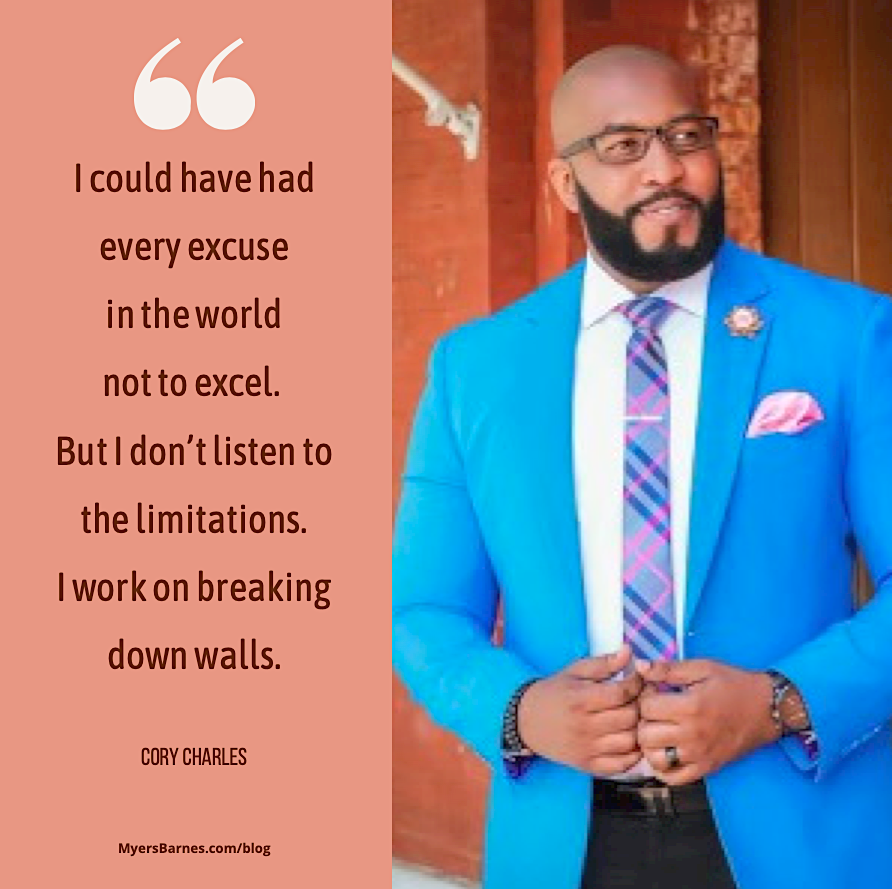 Cory Charles is many things—the Director of Training for K. Hovnanian Homes, a speaker, a member of Pro Builder’s 40 Under 40 Class of 2021, and self-professed “dapper dude”. Cory embraces each role with unrelenting passion. We recently talked about the challenges facing new home sales professionals today, particularly those who are new to the business. We both agreed they need to recognize it’s time to reset your thinking about selling homes.
Cory Charles is many things—the Director of Training for K. Hovnanian Homes, a speaker, a member of Pro Builder’s 40 Under 40 Class of 2021, and self-professed “dapper dude”. Cory embraces each role with unrelenting passion. We recently talked about the challenges facing new home sales professionals today, particularly those who are new to the business. We both agreed they need to recognize it’s time to reset your thinking about selling homes.
MB: As things change, it’s not that the housing market is worsening. It’s correcting itself. But so many new home sales professionals are focused on the obstacle of the interest rate. Are you seeing this with the people you’re training?
CC: Yes! A couple of years ago, as the market started to take off, someone asked me what worried me about this. I said it’s the young salespeople who are basically growing up in a market that isn’t realistic. What kinds of habits are they creating? What systems are they putting in place?
MB: They’ve developed bad habits.
CC: We’re seeing that people who didn’t put together the right habits and processes for success are struggling as the market slows down. We’ve been preaching for over a year that we need to go back to the sales fundamentals of actually understanding the person in front of you, not as a dollar sign, but as a person.
MB: It’s the mindset. The limitations are a product of self-talk. The average person’s self-talk is so self-defeating. They talk themselves out of something, not into it. A salesperson says, “I’m pretty sure they’re not going to buy today.” That’s a self-fulfilling prophecy. The mindset drives the conversation and the buyer feels no urgency in making a buying decision.
When I say this, I get the response, “Well, should I lie to myself?”
Goodness gracious, it’s not a lie but a wrong belief. You’re not lying when you say the buyer is ready. You’re predicting a positive outcome and then you rise to drive that outcome.
CC: I could have had every excuse in the world not to excel. But I don’t listen to the limitations but work on breaking down walls.
MB: These newer salespeople need to understand that they are helping customers with a large decision, not making a sale. Changing your self-talk is helping yourself. You flip your script to “I have a potential homebuyer, not a lead.” Then you present to them as a homebuyer, not a lead.
CC: It’s important to understand that the mindset you have going into every conversation will sway the conversation, even on a subconscious level.
MB: New home sales professionals who came into the industry in the past few years have only seen 3%. Now they see 6 and 7% and they think it’s horrible! In order to be convincing, you must be convinced. Pull out the 20-year charts of interest rates and show it to your buyer. Seeing is truly believing. And it helps to manage unrealistic expectations.
You will never see 3% again. That was a lifetime event that took 50 years to happen. Younger sales professionals had no perception of what happened before, so they’re having a difficult time. We need to make it clear that the best time to buy is when you’re ready to buy. It’s education, not training. Do you want your child to have sex education or sex training?
CC: True! They are unwilling or unable to have these conversations with their buyers. They fear the outcome of the conversation, that they are going to lose the buyer. But you’re going to lose them if you DON’T have the conversation.
I’ve seen some salespeople who don’t have a concrete idea of the buyer’s mission. For example, if I need a home because I’m in a one-bedroom and we’re having triplets, I still need a home. We can lose what that mission is—confused by the rates, the price, etc.—but that buyer still needs a home.
MB: That’s when you hit them with reality. We’re at a new rate. Do you want this lifestyle? Do you want your child to have this lifestyle? Rates aren’t going back.
Then, take the reduction to the ridiculous. Convert the cost difference to a relatable number. “$25,000 over 30 years is about $2.28 a day. That Starbucks cup in your hand cost more than that. Are you giving up for $2.28 a day?”
Sell for need, not for greed.
CC: You have to make sure you’re continuing to ask the right questions, to paint the big picture. Make sure you’re having deep communication. Put the person back into that situation of what’s important to them, what will improve their lives, and how to get them there, even if they don’t buy from you. Now that it’s slowing down, prepare. The “shift” is about to hit the fan!
MB: And that’s when we need to refocus on fundamentals—mindset, motivation, and methodology.
CC: A lot IS mindset. You also need a sales process that is fluid enough to adapt to who’s in front of you. Many times, we have very rigid processes. I’m huge on process but you need fluidity. That’s a challenge for newer sales associates—either having a process at all or being comfortable enough to make adjustments on the fly.
MB: The customer doesn’t have to adjust. The salesperson does. You don’t know who’s coming in the door next. It could be an OSC-set appointment and they’ve gone farther through the process. Regardless, you have to nurture them to work with them.
Markets shift. Work with what you have and be grateful. You need an unrelenting gratitude factor. “I can’t believe I’ve got this buyer to work with!”
CC: If you pair the job with gratitude, you have a great job!
Call it sales training or education, but it’s absolutely critical you develop your new home sales professionals to navigate this market. As a sales leader, it’s your job to provide that knowledge, experience, motivation, and guidance. As a new home sales professional, you will only succeed when you continue to pursue excellence. If you need help, let’s talk.


